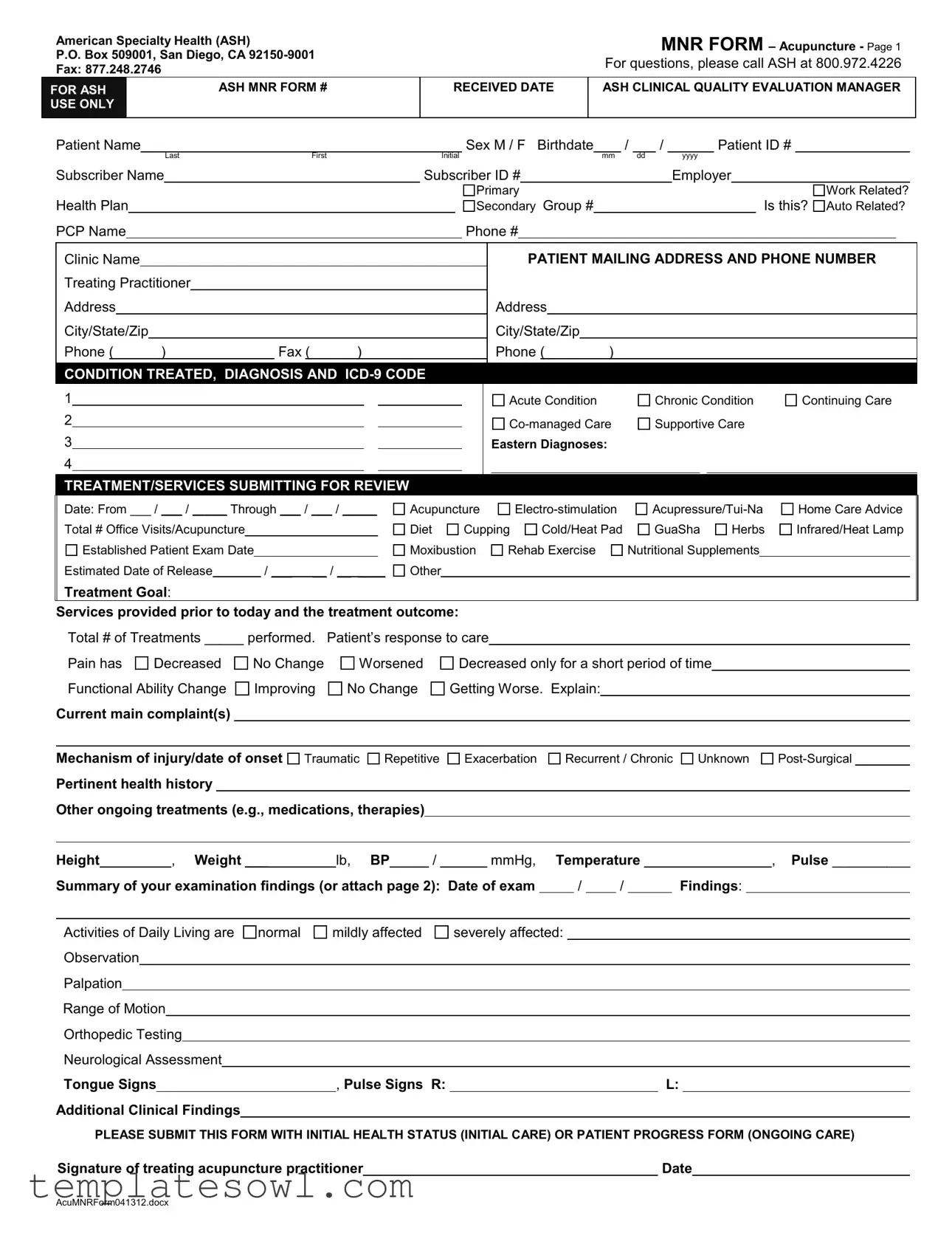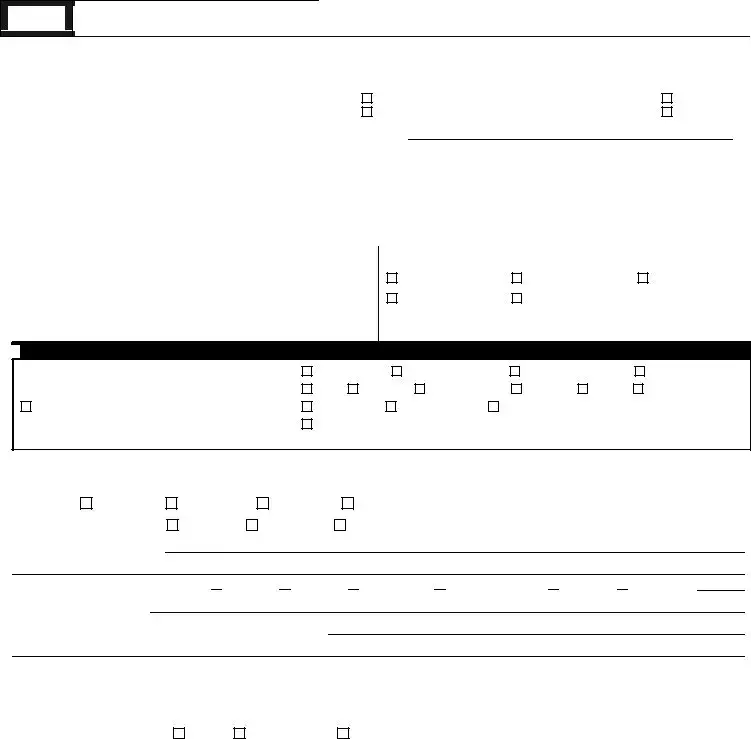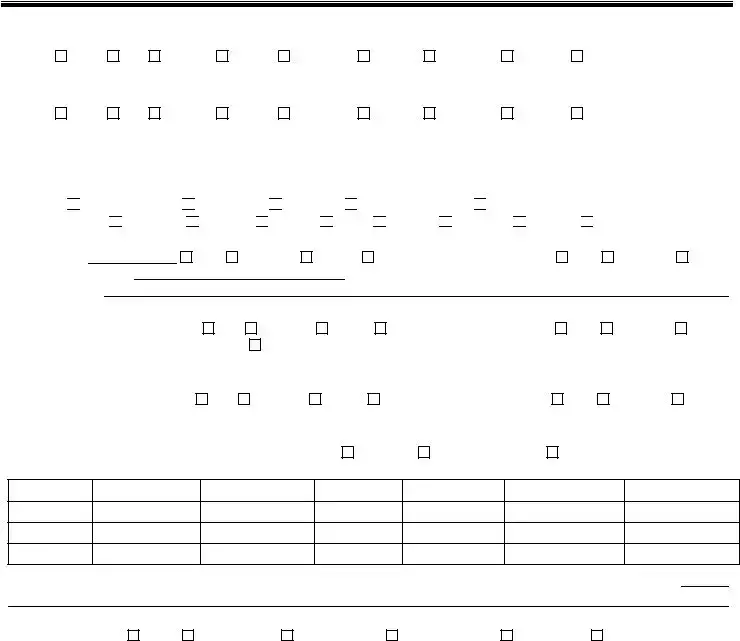What is the purpose of the Ash Mnr form?
The Ash Mnr form, utilized primarily by American Specialty Health (ASH), serves as a detailed tool for healthcare practitioners to report and review acupuncture treatments. The goal of the form is to gather comprehensive information about a patient's diagnosis, treatment plan, and progress. This allows ASH to evaluate the necessity and effectiveness of the proposed or ongoing acupuncture care, ensuring that patients receive appropriate support based on their specific health needs.
Who needs to complete the Ash Mnr form?
This form is intended to be completed by licensed acupuncture practitioners who provide treatment to patients covered under an ASH health plan. Practitioners use this form to document patient information, treatment modalities, and responses to care. It is essential for ensuring that all necessary details are submitted for ASH's review process, which assesses the appropriateness of the services provided.
What types of information must be included?
The Ash Mnr form requires various details, including patient demographics (name, date of birth, and contact information), treatment specifics (diagnosis, ICD-9 code), and clinical findings. Practitioners must also describe the nature of the patient’s condition, treatment goals, and the response to care, including any changes in pain levels or functional abilities. This comprehensive approach helps ASH make informed decisions about care continuation and coverage.
How can practitioners submit the Ash Mnr form?
Practitioners can submit the Ash Mnr form via mail or fax. The mailing address for submission is American Specialty Health, P.O. Box 509001, San Diego, CA 92150-9001. For those choosing to fax the completed form, the number is 877.248.2746. It is vital to ensure that the form is filled out completely and accurately to prevent delays in the review process.
What happens after the Ash Mnr form is submitted?
Once the form is submitted, ASH engages in a clinical quality evaluation. They review the information provided to determine if the care is necessary and aligns with established guidelines. Practitioners will receive feedback or requests for additional information if needed. This review process can be essential for approvals related to insurance coverage and authorization for ongoing treatments.
Can patients check the status of their Ash Mnr submission?
Yes, patients can inquire about the status of their Ash Mnr submission through their healthcare providers. Practitioners should be able to communicate updates or information received from ASH regarding the form review and any decisions made about the patient's treatment plan. Effective communication between patients and practitioners ensures everyone remains informed throughout the process.
Is there a deadline for submitting the Ash Mnr form?
While specific deadlines can vary depending on individual health plans and the nature of the treatment, it is crucial to submit the Ash Mnr form as promptly as possible. Timeliness ensures that the review process can commence without unnecessary delays, which ultimately helps facilitate ongoing patient care and support. Practitioners should refer to the guidelines provided by ASH or the patient’s health plan for any specific timelines.
Where can practitioners find resources for completing the Ash Mnr form?
Resources and guidance for completing the Ash Mnr form can typically be found on the American Specialty Health website or by contacting their support line at 800.972.4226. Practitioners may also receive training or educational materials directly from ASH that outlines the form's requirements and best practices for completion. Utilizing these resources can enhance the accuracy of submissions and support effective patient care.


 TREATMENT/SERVICES SUBMITTING FOR REVIEW
TREATMENT/SERVICES SUBMITTING FOR REVIEW Traumatic
Traumatic  Repetitive
Repetitive 
 Exacerbation
Exacerbation 
 Recurrent / Chronic
Recurrent / Chronic 
 Unknown
Unknown 



 Nausea/Vomiting
Nausea/Vomiting 
 Fever/Chills
Fever/Chills 
 Dizziness
Dizziness 
 Phono/Photophobia
Phono/Photophobia 
 Neck Rigidity
Neck Rigidity
 Sensation
Sensation 
 Strength
Strength 
 Speech
Speech 
 Vision
Vision 
 Hearing
Hearing 
 Cognition
Cognition 
 Memory
Memory 
 Eye Motion/Pupils React
Eye Motion/Pupils React